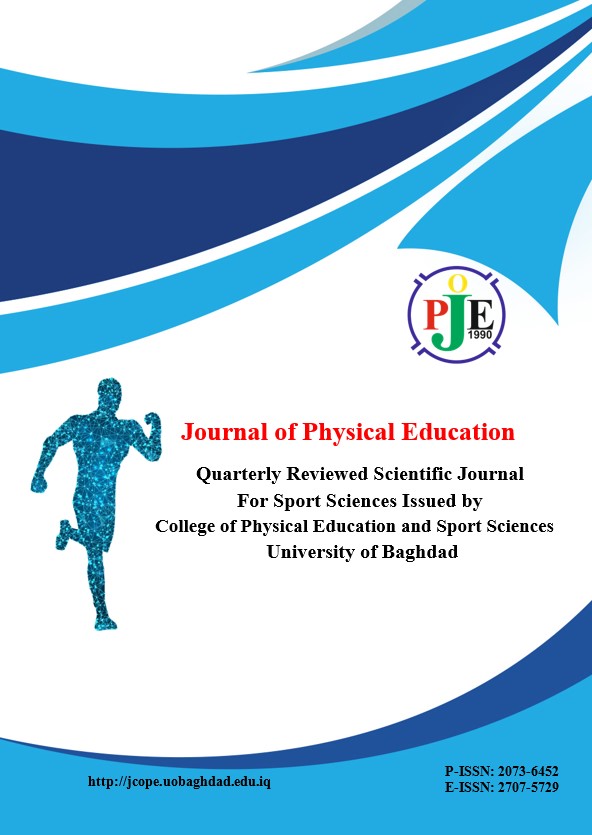تباين التكيف الوظيفي بين العضلة العضدية الأمامية والعضلة الفخذية على أثر تطوير القوه القصوى
DOI:
https://doi.org/10.37359/JOPE.V16(2)2007.837الملخص
تسهم تدريبات القوة العضليه في بناء العضلات وزيادة حجمها وقابليتهاعلى الانقباض ، ويصاحب هذا التطور حالة تغير فسيولوجي بالعضله والتي تطرأ بشكل عام على الوحده الحركيه ما يحدث لها من سعه وقدره جراء التدريب ،وليبان المعرفه جاءت أهمية البحث في دراسة أثر تطوير القوه القصوى على التكيف الوظيفي لعضله العضديه الاماميه والعضله الفخذيه ،أما مشكلة البحث كانت بتباين هذه التطورات الوظيفيه والتي قد تعطي خاصيه لكل مجموعه عضليه ما يصعب التعامل عند تدريبها ، وتهدف هذه الدراسه معرفة معدلات التطور الوظيفي للعضله ونشاطها الكهربائي ( EMG ) على أثر تطور القوه القصوى لعضله العضديه الاماميه والعضله الفخذيه المستقيمه . بينما كانت فروض هذه الدراسه يوجد تباين في معدلات التطور الوظيفي للعضله ونشاطها الكهربائي ( EMG) على أثر تطور القوه القصوى لعضله العضديه الاماميه والعضله الفخذيه المستقيمه.وقد أجريت هذه الدراسه على عينه من أحد (11) طالب من المرحله الاولى في كلية التربيه الرياضيه وهم هواة في ممارسة تدريبات القوه العضليه وبعد تجانس العينه تم تقسيمهم المجموعتين ، فكانت المجموعه الاولى تتدرب على تمرين كيرل حديد والمجموعه الثانيه تدربت على تمرين الدبني من خلال منهج معد لتطوير القوه العضليه القصوى لفترة ثمان (8) أسابيع بواقع ثلاثة وحدات تدريبيه بالاسبوع ، وقد أخذت لهم قياسات القوه القصوى ونشاط الكهربائي لعضلات الذراعين والرجلين (EMG) وكانت نتائج هذه الدراسه: 1. حققت عضلات الرجلين نسبة تطور (22%) أعلى من نسبة عضلات الذراعين (18%) مايؤكد بأن العضلات الكبيره تستجيب بشكل أفضل ولها القابليه على التطور السريع . 2. جراء تدريبات القوه القصوى تحصل تكيفات وظيفيه لمؤشرات النشاط الكهربائي لعضله (EMG) بنسبة تطور لمؤشر قوة الانقباض (Amp) لعضله الفخذيه (51%) ولعضله العضديه (21%) بينما نسبة التطور لمؤشر فترة الانقباض (Dur) لعضله الفخذيه (21%) ولعضله العضديه (31%). وتوصي هذه الدراسه: 1. الاهتمام بتدريبات القوه العضليه لعضلة العضديه بأتجاه أطالة فترة الانقباض العضلي من خلال تمرينات مطاولة القوه . 2. الاهتمام بتدريبات القوه العضليه لعضلة الفخذيه بأتجاه زيادة تحفيز قوة الانقباض من خلال تمرينات القدره .






